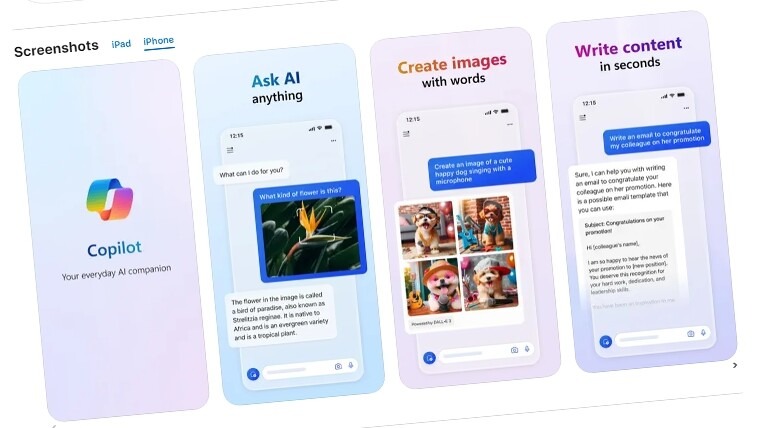Following the app’s recent release on Android, Microsoft has extended the reach of its state-of-the-art AI chatbot, Copilot, by integrating it into the iOS and iPadOS platforms. With this move, an even greater number of users will be able to benefit from AI.

Microsoft Copilot App Features on iPhone
Comparable in functionality to OpenAI’s ChatGPT smartphone app, the Copilot app grants iOS users access to Microsoft Copilot (previously known as Bing Chat). It enables users to effortlessly compose emails, make inquiries, and summarize text, making it a versatile tool for AI assistance. A notable feature of the app is its integration with the text-to-image generator DALL-E3, which empowers users to generate images within the app. The app recently got support to create AI music using Suno.
Copilot brings a significant advantage over other AI messengers as it provides free access to GPT-4. It is the latest large-language model from OpenAI. This is a notable step forward compared to the free version of ChatGPT, which runs on GPT-3.5. The utilization of GPT-4 enhances the app’s capabilities and responsiveness. In a strategic move, Microsoft has rebranded Bing Chat to Copilot, aligning with its goal of offering a standalone experience similar to ChatGPT. This rebranding signifies a shift in focus and a commitment to providing users with a unique and dedicated interaction platform.
In addition to the mobile app, Microsoft has introduced a separate web experience for Copilot, further distinguishing it from Bing and emphasizing its standalone nature.
The Copilot app is now available for download on the Apple App Store for iOS and iPadOS users, marking a significant milestone in Microsoft’s efforts to deliver advanced AI solutions across various platforms. Users can now experience the power of Copilot’s AI assistance, text-to-image integration, and the enhanced capabilities of GPT-4 directly on their iOS devices.
Related:
- Vivo Teases “Jovi CoPilot” Assistant in a new Origin OS 4 Video Teaser
- Microsoft’s Copilot teams up with Suno to unleash AI-powered music creation in Edge
- Xiaomi Smart Band 8 Pro Genshin Impact Special Edition up for sale
- Giztop’s Christmas Holiday Savings: Unwrap Joy with Exclusive Discount
- Best VR / AR Headsets of 2023
- Best Robot Vacuums of 2023







